Mistakes – what is a mistake?
There are those that will always deny making mistakes and there are those that can keep smiling when they have made one as they have thought of someone to blame it on. So many projects can go off course along their journey, or find that the goalposts have been moved. Those with the creative thinking processes, for good or bad, can always find a solution; then only count its merits.
In the case of the No 10 plane, and its simplicity, there seemed nowhere to go wrong, but to be 100% sound in my mind I need to alter some of its dimensions. Having slept on it I have decided it is folly to rescue anything I am not completely happy with. This doesn’t sound much – just need to remake the sides and procure some new infill material. I have come too far now to take any risks. Reputations can’t be compromised. Luckily I haven’t had to use the reject bin too much over the years – it is due to put on weight.
Apologies to those waiting for their planes but as you can see from the blog below there is still steady progress.
—————–
In the making of my planes I rely quite a lot on a manual mill. So far throughout the making of these planes the machine has been in constant use.
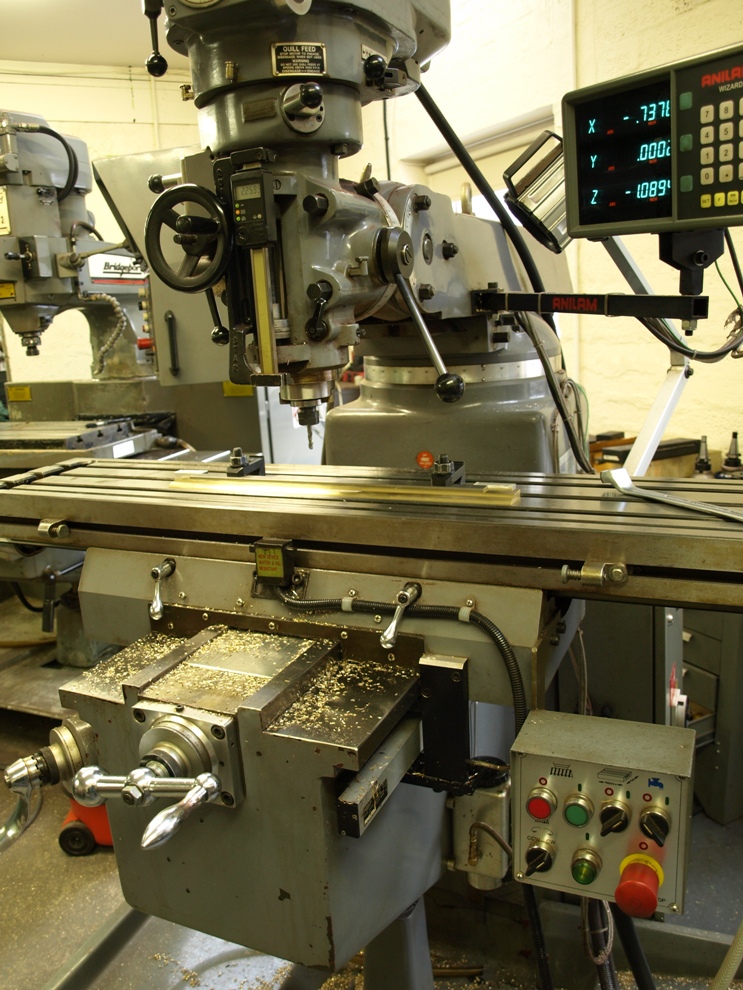
There is a lot to be said for a good quality manual mill with a DRO. The skill is in setting up and operating these machines and along with essential hand working I am able to achieve standards that are impossible to achieve with hand work alone. In my cabinet making and joinery days there was always a division between machinists and hand workers. Why? I have always wanted to be involved in every aspect of the project from initial thought to the finished item. This is why I never outsource any of my work.
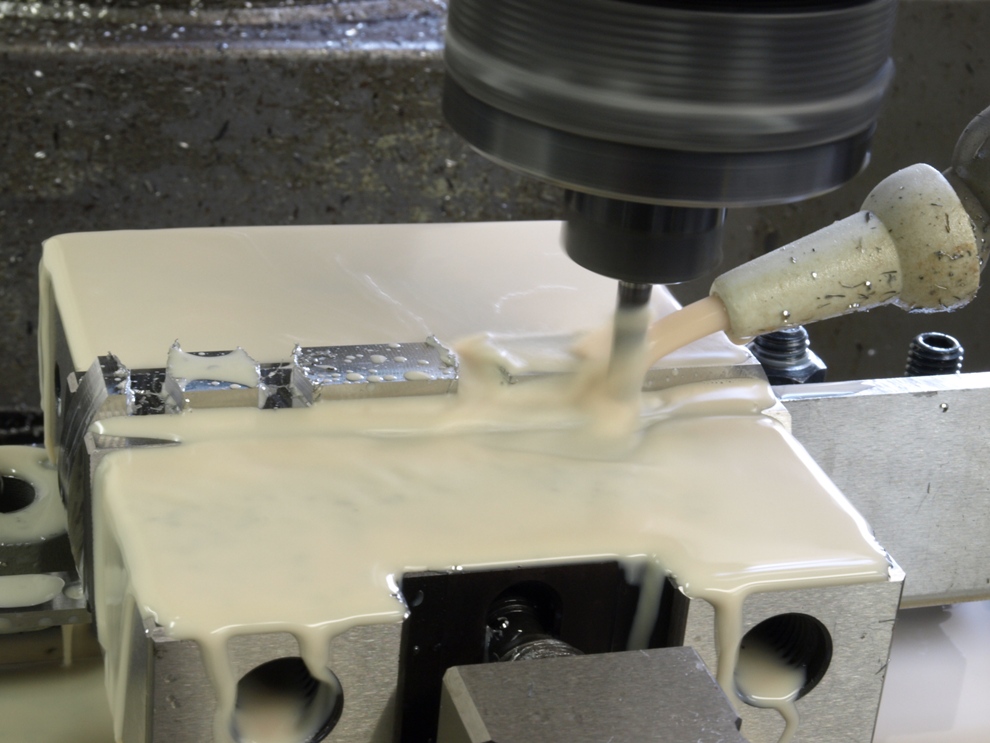
For some reason I have never looked forward to doing this stage of the work in stainless steel in spite of all the experience I gained with the No 98. With a good plan of attack stainless steel will lend itself to quite a lot of cutting and manipulation. There are some that shake at the knees at the mention of stainless steel. This picture shows the first stage of roughing out for the dovetails and in the following picture it shows the milling in the final stage with a forming tool. Note that the bottoms having the compound dovetail so they are made in mirrored pairs to simplify things.
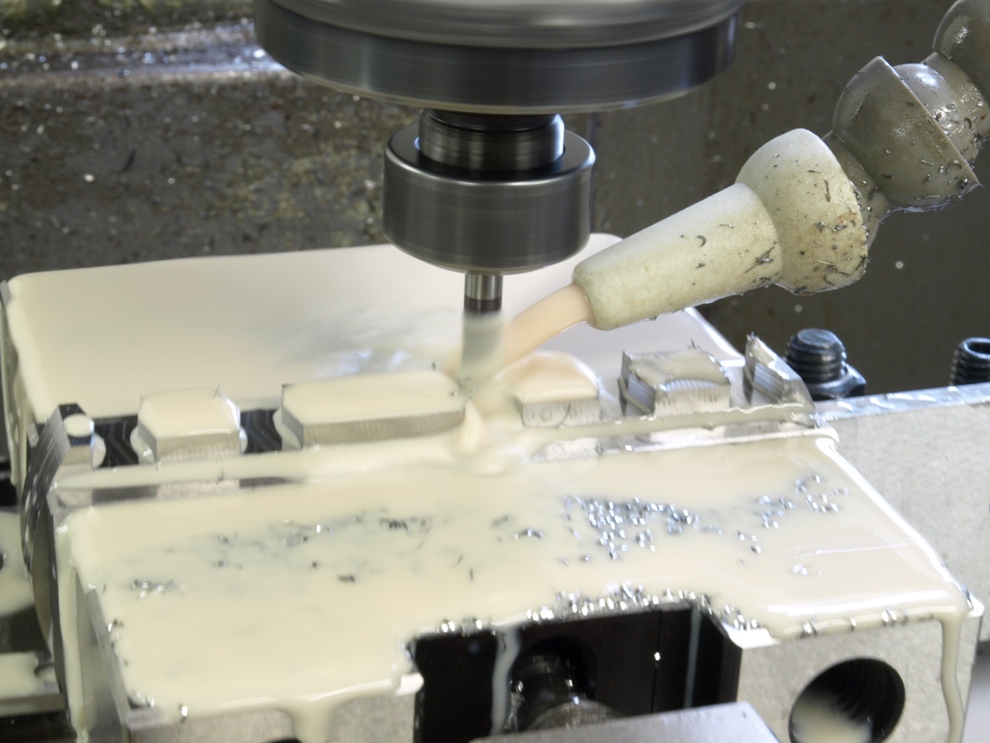
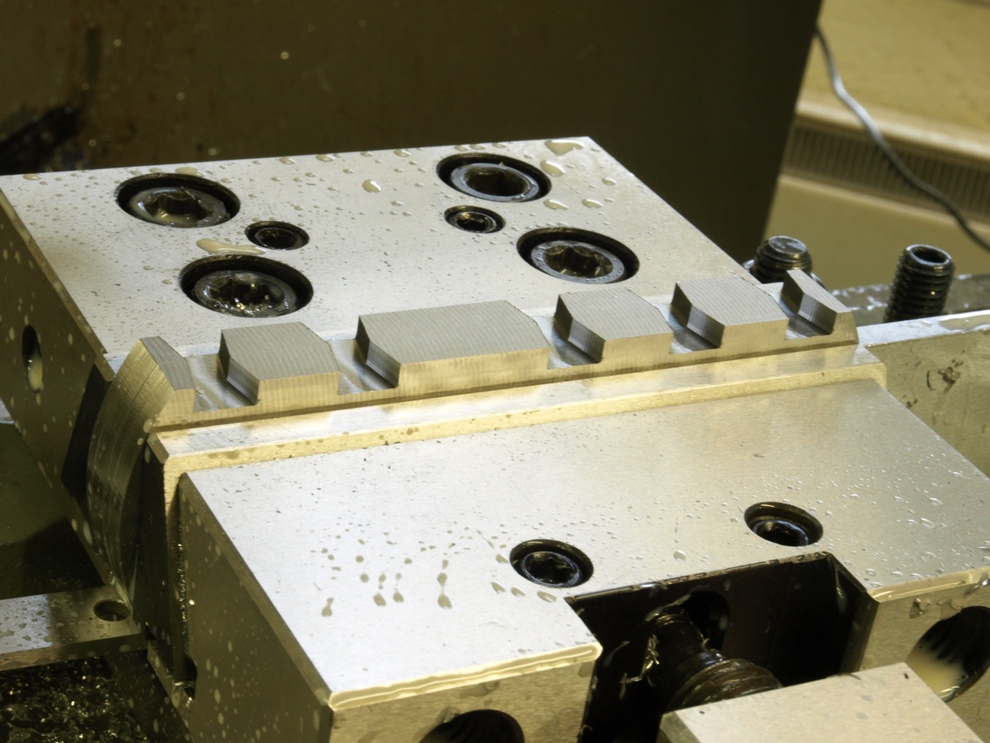
Dovetails finished with all the mess cleaned away.
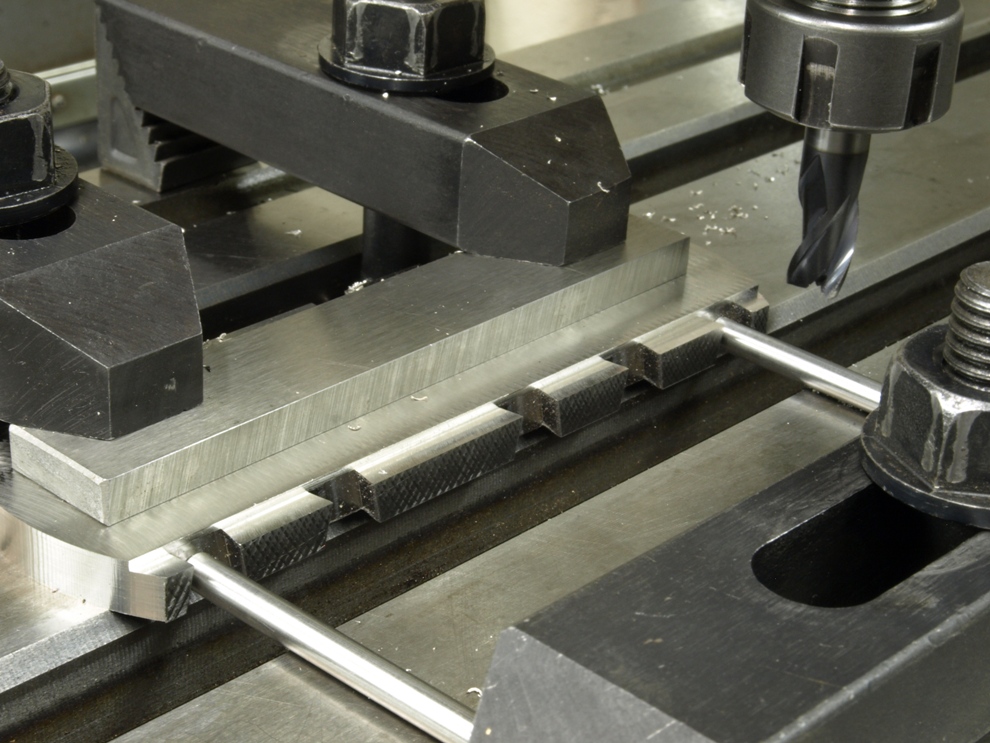
This is another element that I have introduced to dovetailing in metal. As you can see is rebating the top sides of the dovetails, which lends more support to the plane sides. This makes a considerable structural upgrade.
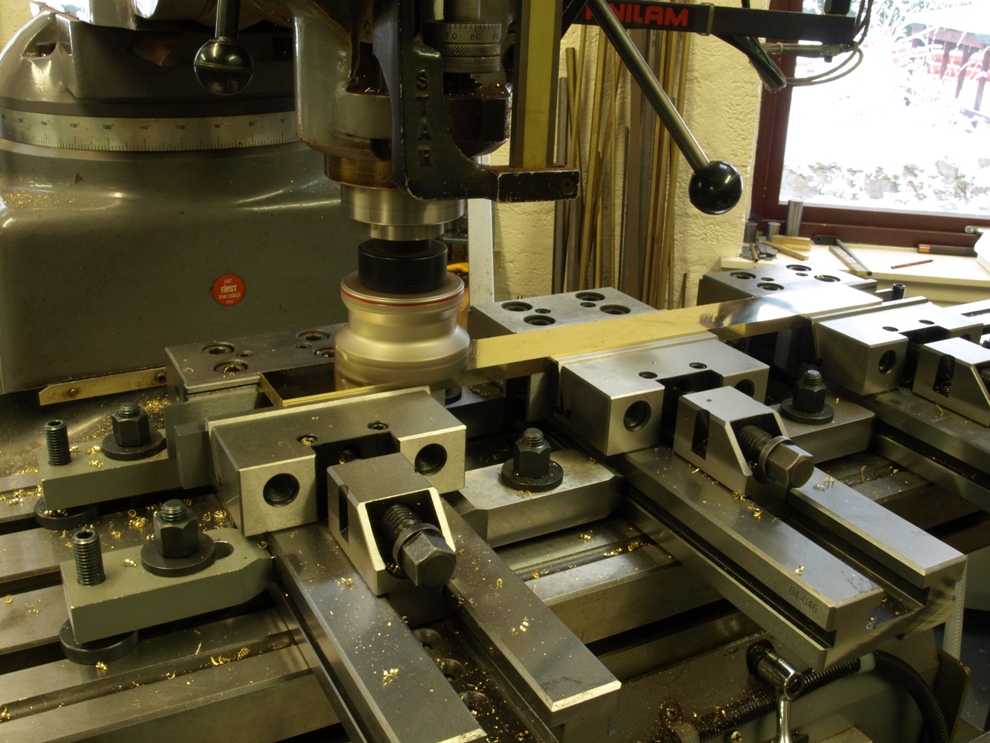
Putting the bottoms aside for the moment I now need to work on the lever caps.
Picture shows the lever caps being prepared again in a similar way as you would with wood by planing faces and edges. Here the manual mill comes into its own.
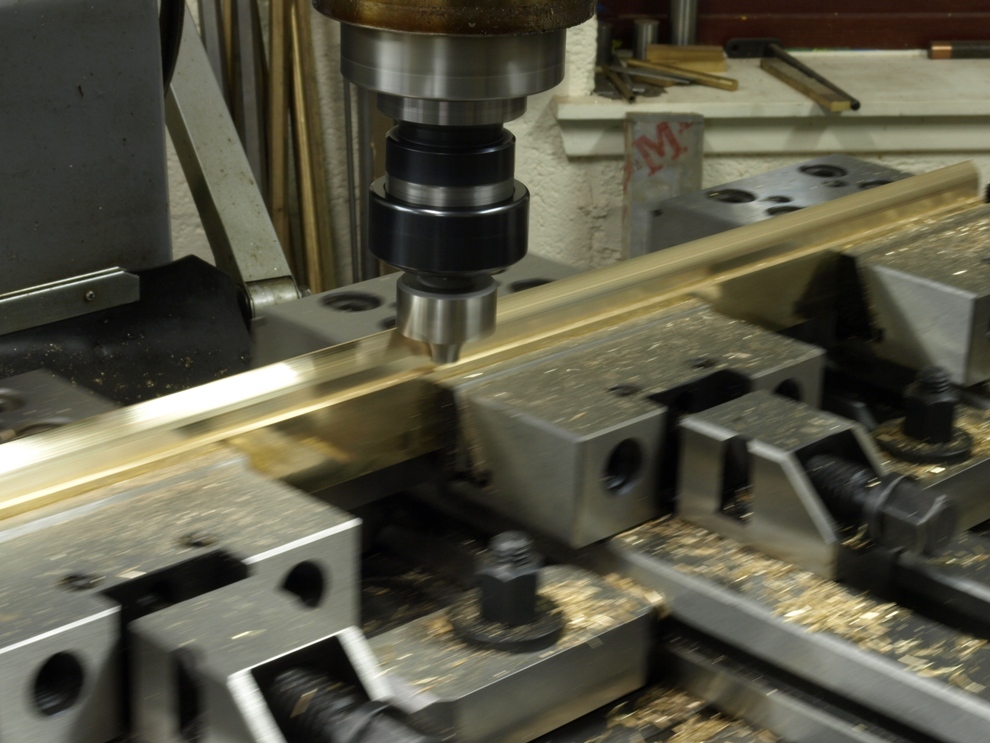
You will have noticed that I produce most of the form whilst it is in a bar section. When finished each bar cuts into several items. As there is a considerable amount of setting up with this kind of work it is prudent to make a bit of stock.
Here I am radiusing the front edge of the lever cap after routing the step.
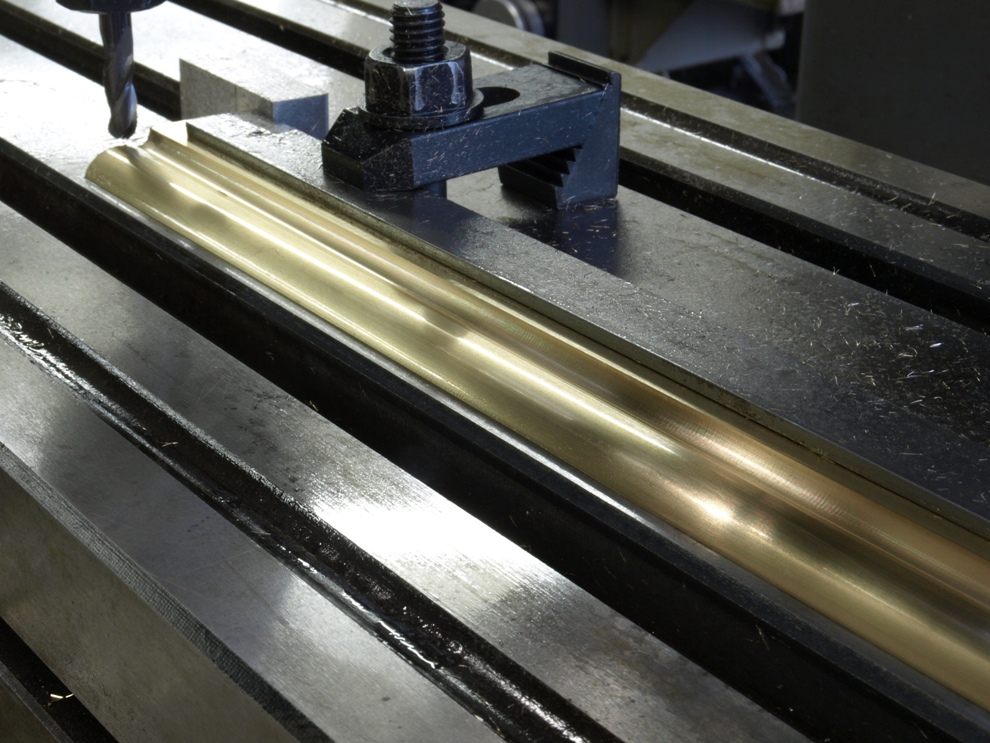
The captive recess completed with a bull nose cutter.
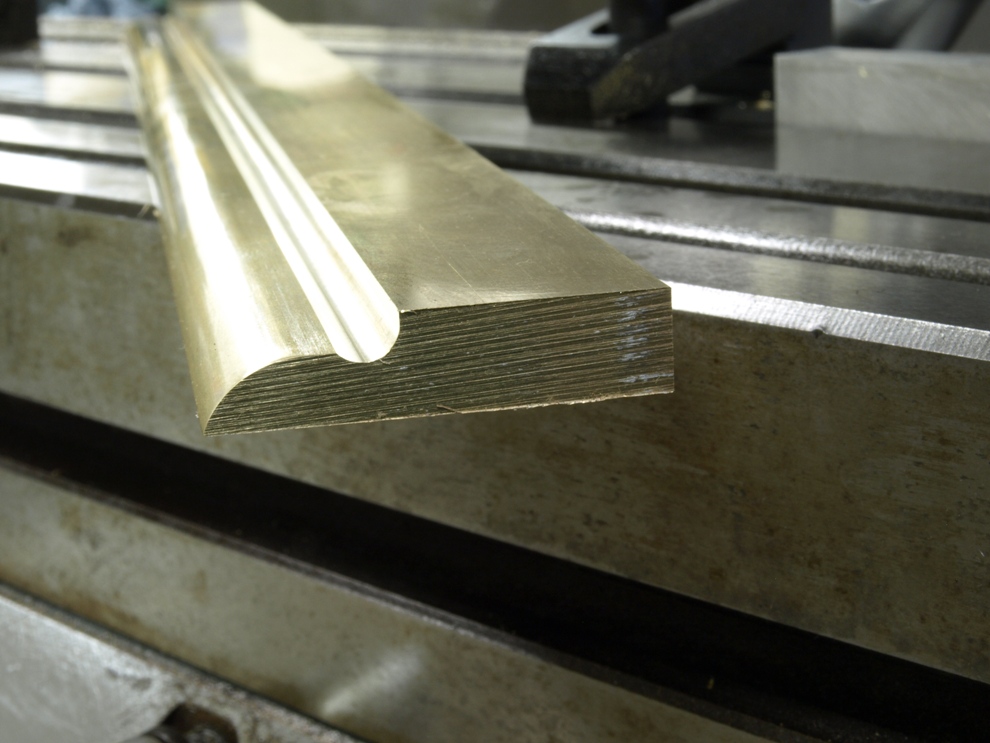
How nice it would be to have a shelf filled with bars like this.
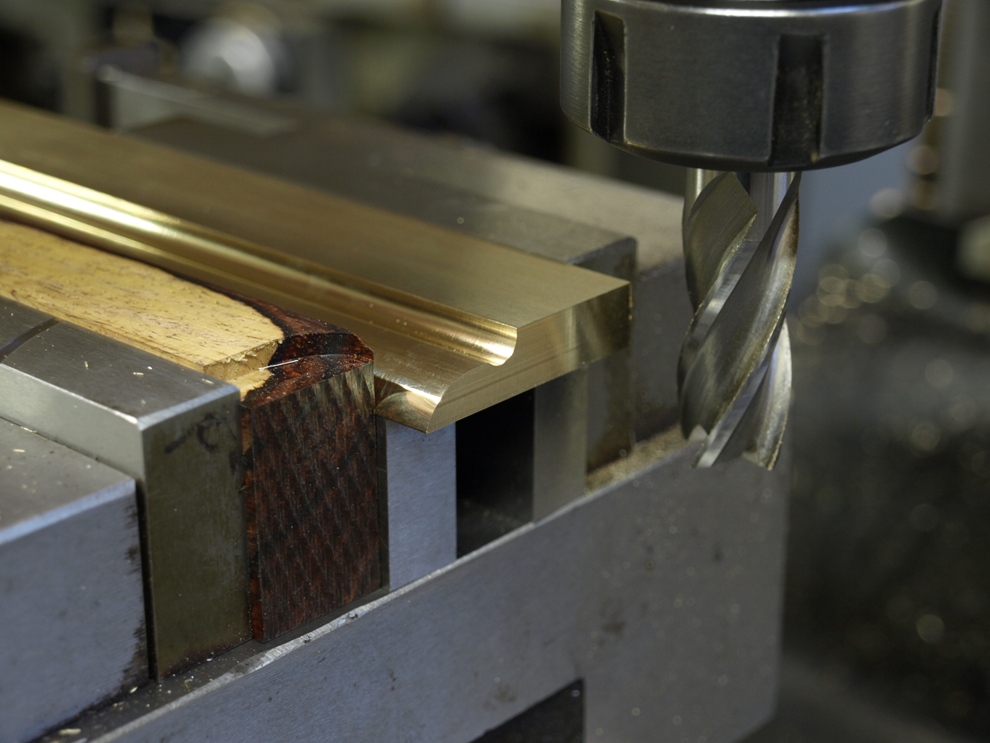
Before I start cutting this bar up into individual lever caps I like to face the end up before each cut. A nice piece of cocobolo makes a good protective clamp on the front edge.
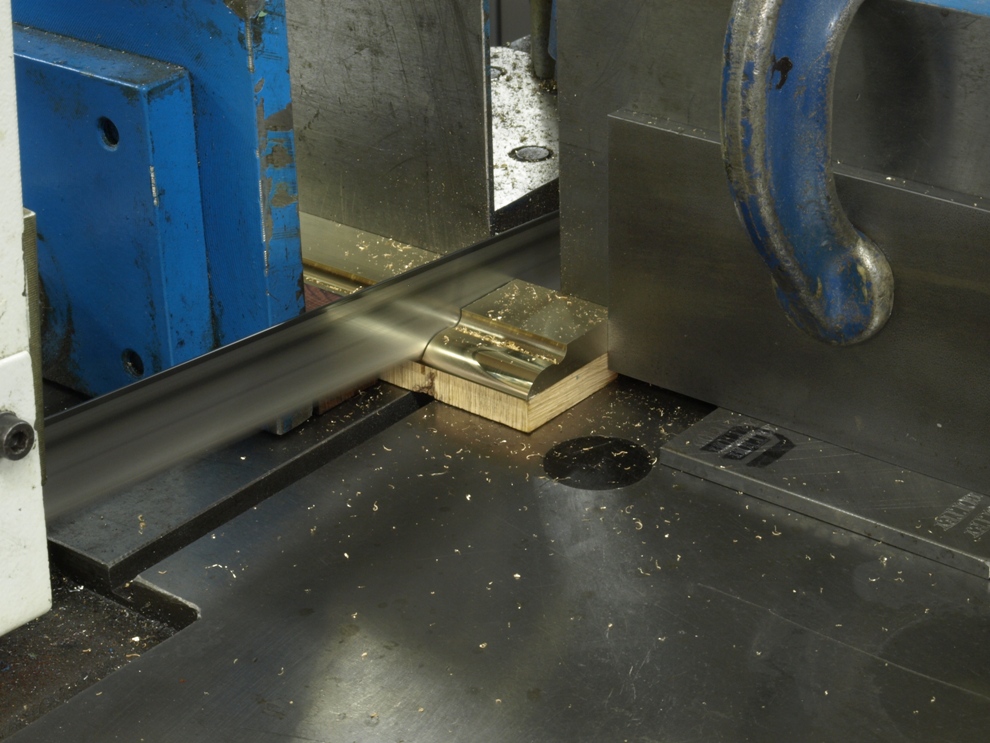
After each visit to the milling machine to end face I go to my pre-set saw (with an improvised stop and protective packing) to cut the lever caps off to the appropriate size. By pre-facing the end before each cut I am able to keep the cutting wastage down to very fine limits. This means that I can get that extra one out of the bar.
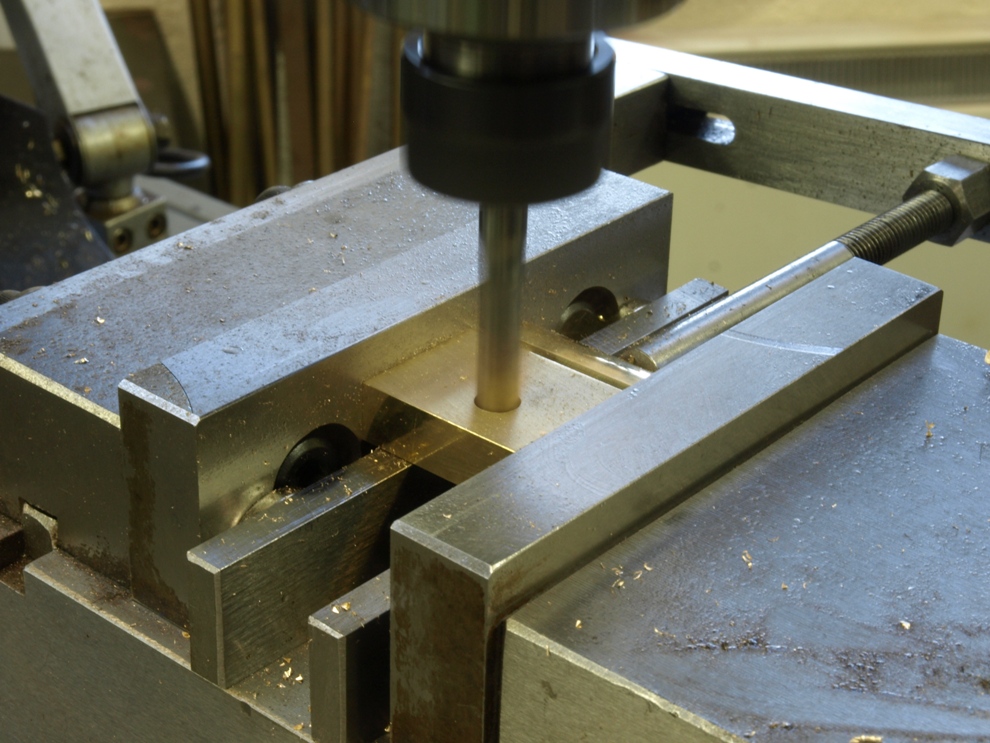
Now these items are looking like lever caps and both sides are trued up, I can set up for the boring of the thumb screw hole with the manual mill. This picture shows the spindle speed at around 1700 rpm.
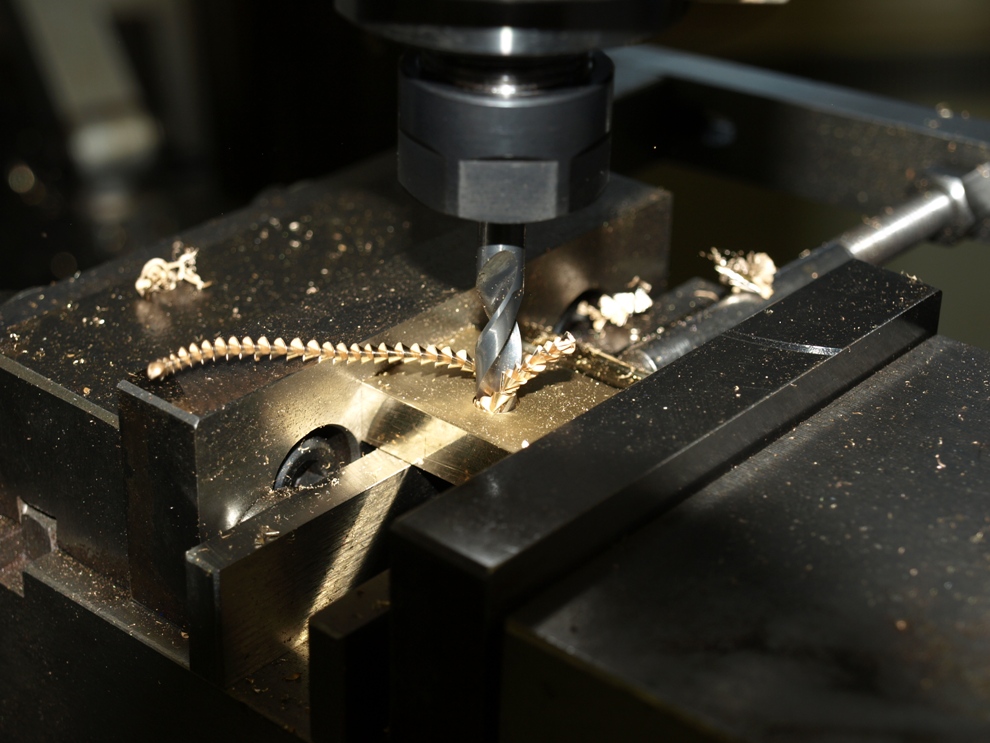
Just taking the picture with a flash it does a good job of freezing this operation which wouldn’t normally be seen as the swarf flies round too fast.
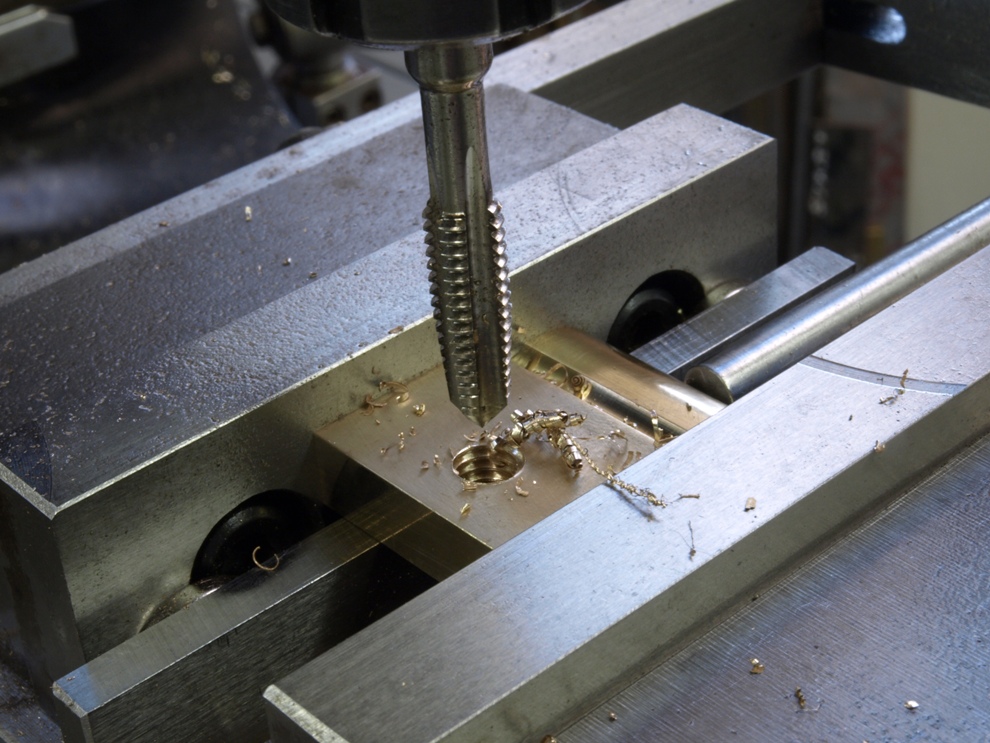
With all the boring complete and out the way I make a tool change. With the same stops and work holding and only a change of spindle speed the lever caps are now tapped.
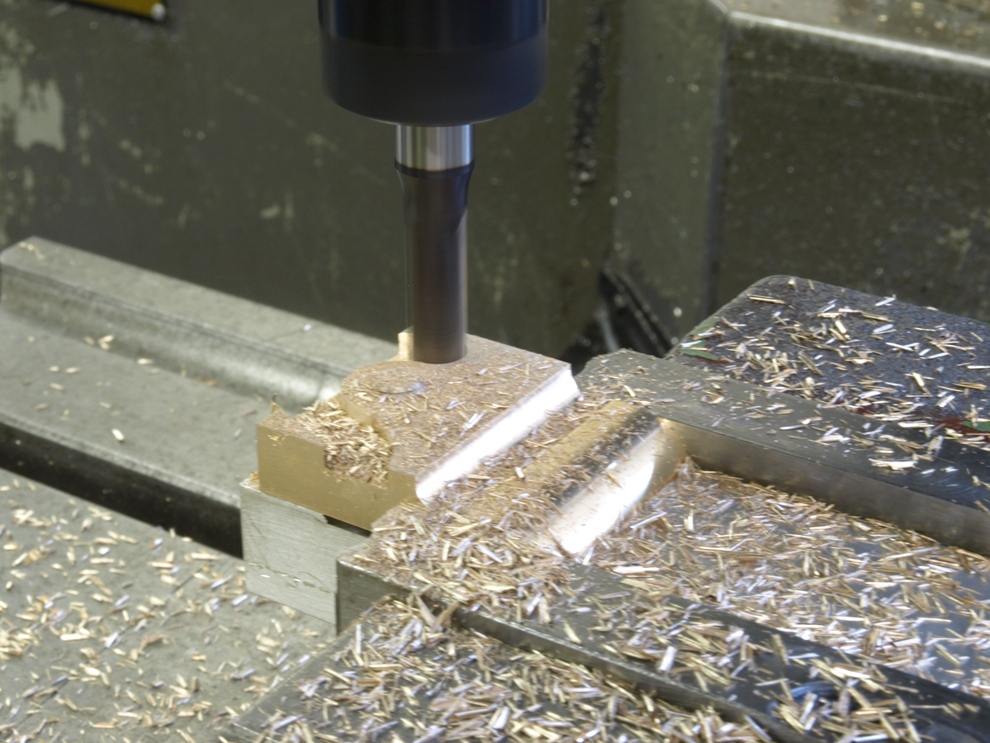
On to the CNC milling machine (and more setting up and programming) I start applying an interesting form on the top end of the lever cap around the thumb screw area. One of the nice things of working with brass (naval brass CZ112) is not having to run coolant.
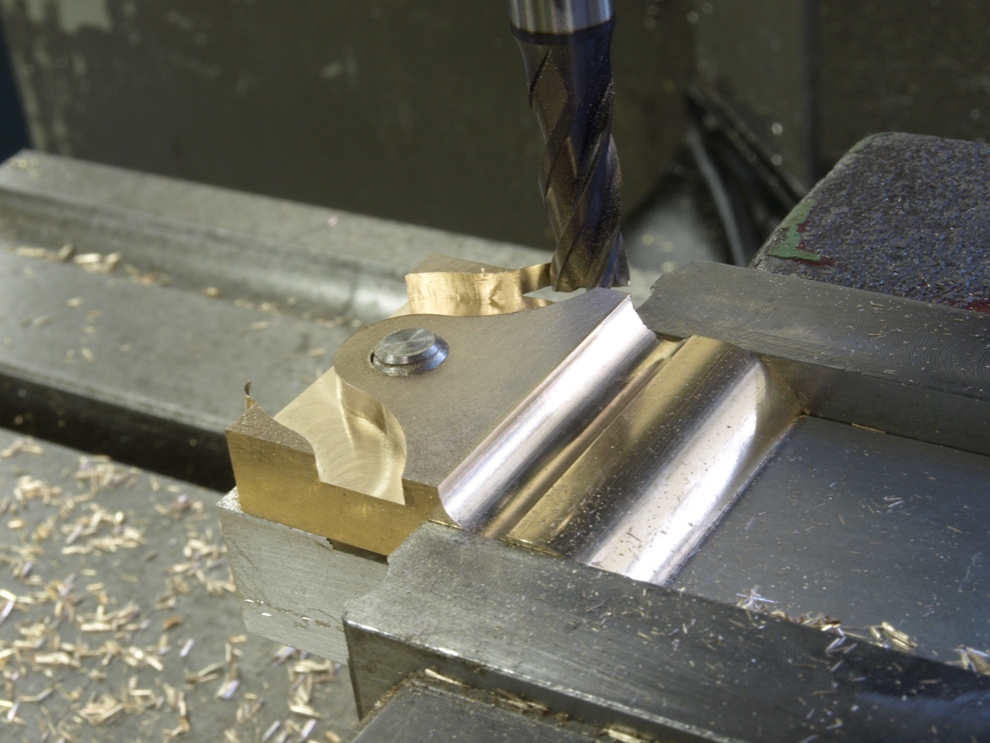
Showing the first cut after the swarf is blown away.
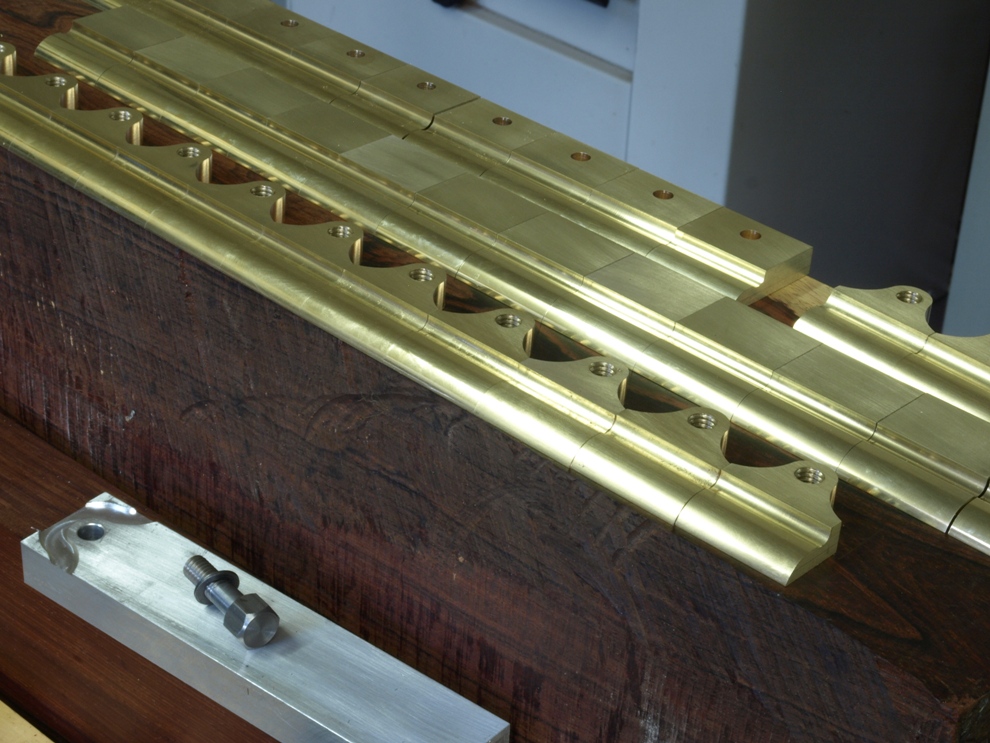
Here showing different stages of the work. Also showing a simple work holding fixture.
December 24, 2011
Window to my workshop 59
2 Comments »
RSS feed for comments on this post. TrackBack URL
Leave a comment
You must be logged in to post a comment.
Lovely stuff, Karl – as usual.
The kind of precision and production together that those of us with a bunch of files and a vise can only dream of.
Best –
Dave Weaver
Comment by DW Pgh — January 3, 2012 @ 1:44 pm
Karl , we wait in anticipation, please just a glimpse of the final outcome of the New Mitre plane ,ZZ
Excellent mini-series in Furniture & Cabinetmaking a must for all wannabe Makers .Maybe a book on basic elements of handplane making ?
Comment by ZigZag — February 3, 2012 @ 3:33 pm